I once rendered one of my college professors speechless by declaring that Van Gogh was one of the pre-internet-era content marketers. I arguably could have phrased the comment a lot more eloquently than I did at 19 years old, but suffice it to say that I won that particular debate.
My argument was very much based on loose definitions, but what is content marketing if not utilizing a chosen content format to market a bigger picture, a bigger plan, or, in Van Gogh’s case, himself as an artist?
In order to shed some light on this matter—and to prove to myself that Mr. Tasker’s sigh was due to him being stumped and not disappointed—here are 14 content marketing examples to follow in pursuit of fame and greatness.
Table of contents:
Content marketing in a nutshell
In its broadest sense, content marketing is creating and sharing valuable content to connect with your target audience. It’s not just about selling something; it’s about building relationships and establishing yourself as a trusted resource.
Go beyond blog posts (but do those, too!). I explored the web, and the best content marketing examples I found span social media, events, and websites, offering a buffet of engaging formats—from entertaining videos and informative infographics to interactive social media campaigns and targeted email newsletters.
The key is to find the content mix that resonates with your audience and aligns with your brand identity. Whether you’re a seasoned marketer or just starting out, content marketing offers a wealth of creative possibilities to capture attention and build long-lasting connections.
1. Duolingo’s TikTok
Let’s face it: traditional marketing messages can get repetitive. But some brands are taking a bold approach by using innovative and unconventional strategies to capture attention. Take Duolingo, the language learning app, for example. They stormed the social media scene with their hilarious and relatable TikTok videos.
Duolingo didn’t shy away from humor. They leveraged trending topics and memes to showcase their brand in a fun and unexpected way. Their TikTok page could have been a relentless attempt to make every post about language learning, but instead, Duolingo found more value in humor and showcasing their identity.
Lesson learned: Don’t be afraid to experiment with different content formats and platforms. Embrace humor and relatability to connect with your audience on a deeper level, and remember that sometimes the most unexpected approaches can be the most successful.
2. Dollar Shave Club’s “Our Blades Are F*cking Great” video
Video allows you to capture attention quickly, tell a compelling story, and leave a lasting impression. Dollar Shave Club’s “Our Blades Are F*cking Great” video is a prime example of how video content marketing can skyrocket brand awareness and engagement.
This video is, in my opinion, one of the single best pieces of content marketing of its time. Bear in mind that this video found great success and went viral without being promoted as an ad. The company didn’t really stand a chance against the giants of the razor blade industry, yet this video, which they promoted manually, garnered lots of attention and helped build the company a client base.
This viral video broke the mold with its bold humor, clear message, and relatable approach. It didn’t shy away from addressing a common consumer pain point (expensive razors) and offered a solution (its affordable subscription service) in a way that was both informative and entertaining.
Lesson learned: Craft compelling video content that addresses your audience’s needs and interests. Inject some personality and explore creative approaches. A well-executed video can grab attention, establish your brand voice, and leave a lasting impression.
3. Zapier’s blog
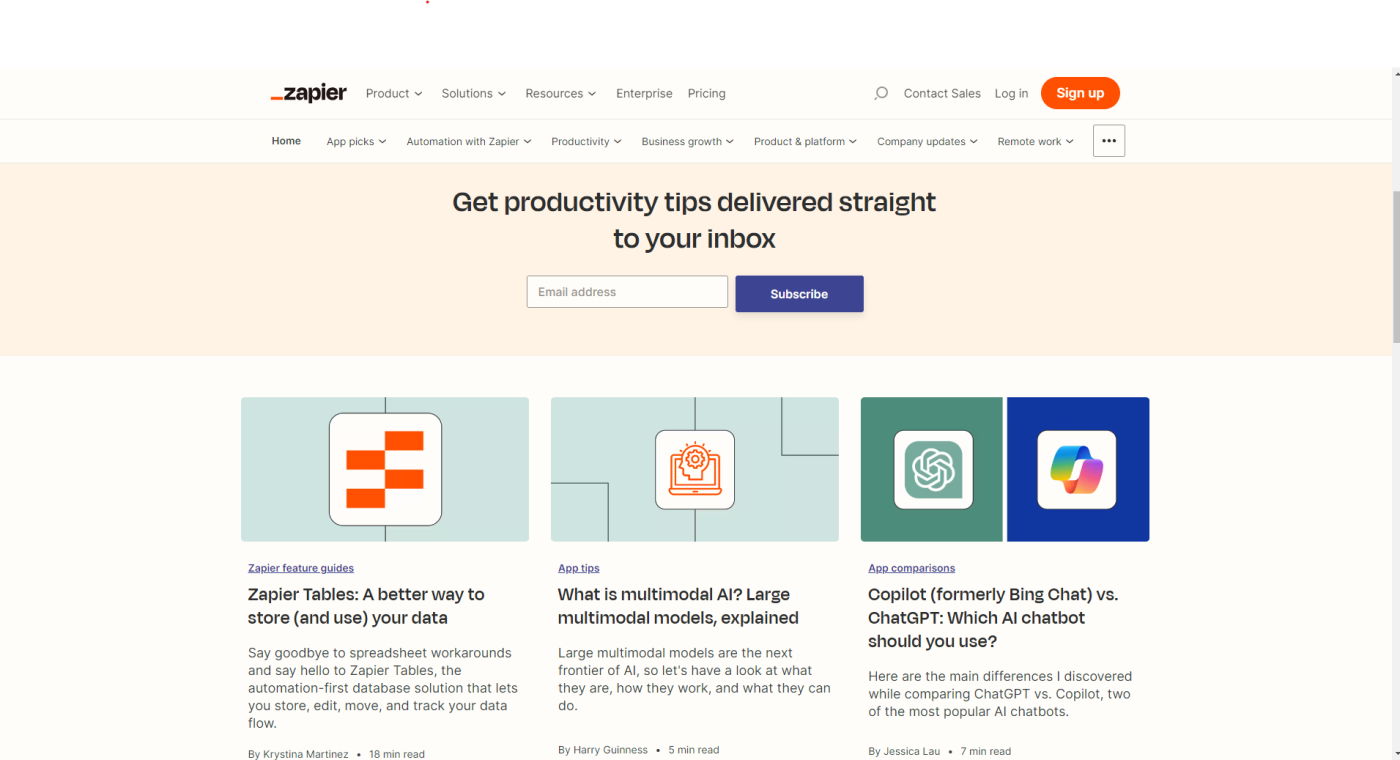
I’ve been known to beat my own drum occasionally, and in this instance, it’s for the collective good. Blogs remain a powerful tool for attracting, engaging, and educating your audience. Take Zapier’s blog, which has become a go-to resource for anyone looking to learn about apps, increase their productivity, and streamline their workflows.
Zapier’s blog success hinges on a few key ingredients. Zapier consistently publishes high-quality content that tackles real pain points and offers practical solutions.
As you hopefully noticed from my hilarious insights in this article, the blog features a conversational tone and relatable examples, making complex topics easy to understand and implement. This valuable content keeps readers coming back for more, establishing Zapier as a thought leader in the automation space and driving valuable website traffic.
Lesson learned: Build a content strategy that educates and empowers your audience. Focus on creating valuable blog posts that address their needs and provide actionable solutions. By establishing yourself as a trusted resource, you can attract a loyal readership and drive consistent traffic to your website.
4. Wendy’s X (Twitter) voice and personality
Stop taking the concept of a Biggie Bag and making it worse https://t.co/pBDUQGtpYP
— Wendy’s (@Wendys) May 24, 2024
Wendy’s, the fast-food chain, has mastered the art of social media content marketing with their sassy and witty X (formerly Twitter) persona.
Their clever tweets, playful jabs at competitors, and hilarious pop culture references have garnered a massive following. Wendy’s doesn’t shy away from humor and engagement, creating a sense of community around their brand.
This unique voice and personality make for a hilarious presence that does not disappoint. Wendy’s has become a cultural touchstone and proves that social media can be a powerful tool for building brand loyalty and a positive brand image, even with sass.
Lesson learned: Engage with your audience in a way that aligns with your brand identity, leveraging humor and cultural relevance to build connections and a loyal following.
5. Moz’s SEO webinars
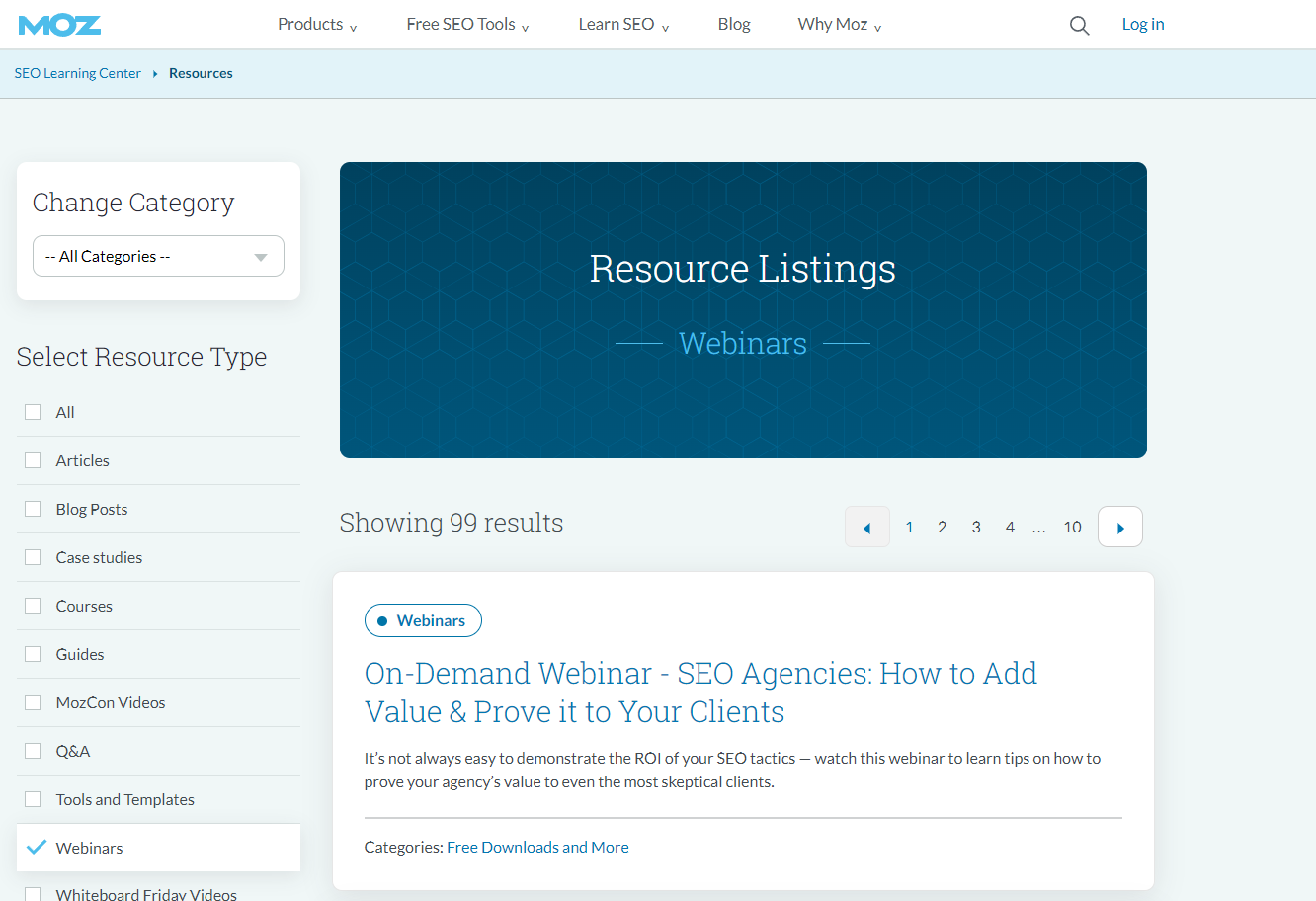
SEO can be a tricky world to step into, so Moz decided to help out with their SEO webinars. These informative sessions cater to a targeted audience eager to improve their website’s visibility and organic traffic. Moz’s webinars offer a wealth of benefits.
They feature industry experts who share their SEO knowledge and practical strategies in an engaging format. This allows attendees to gain valuable insights, ask questions in real time, and stay up-to-date on the latest SEO trends.
By providing free access to this high-quality content, Moz establish themselves as a thought leader in the SEO space and nurtures leads who may eventually convert into paying customers.
Lesson learned: Identify the specific needs and challenges of your target audience. Offer informative content that addresses those needs, such as educational webinars or workshops. By establishing yourself as a valuable resource, you can build trust, nurture leads, and ultimately convert them into loyal customers.
6. IBM’s thought leadership content
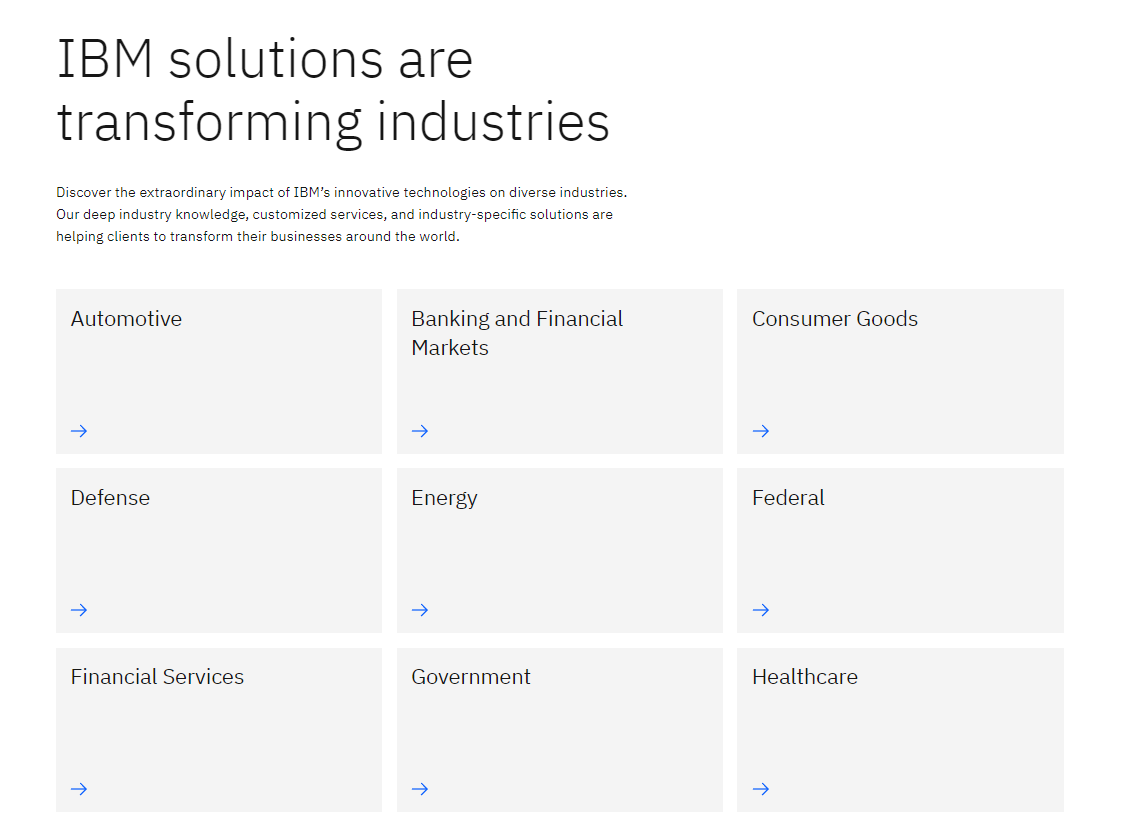
IBM exemplifies thought leadership through its insightful white papers, industry reports, and engaging presentations. This content tackles emerging technologies like artificial intelligence and blockchain, offering valuable insights and analysis.
There are two benefits to IBM’s thought leadership approach. First, it positions them as a trusted resource and industry expert. By sharing their knowledge and expertise, IBM demonstrates their commitment to innovation and tackles topics at the forefront of technological advancements.
Second, this content attracts a target audience interested in these emerging fields. Potential customers who find IBM’s thought leadership content valuable are more likely to consider them for their needs down the line.
Lesson learned: Establish yourself as a thought leader in your industry by creating informative content that explores emerging trends and challenges. Share your expertise and insights to build trust, attract potential customers, and position your brand as a frontrunner in your field.
7. Salesforce’s eBooks
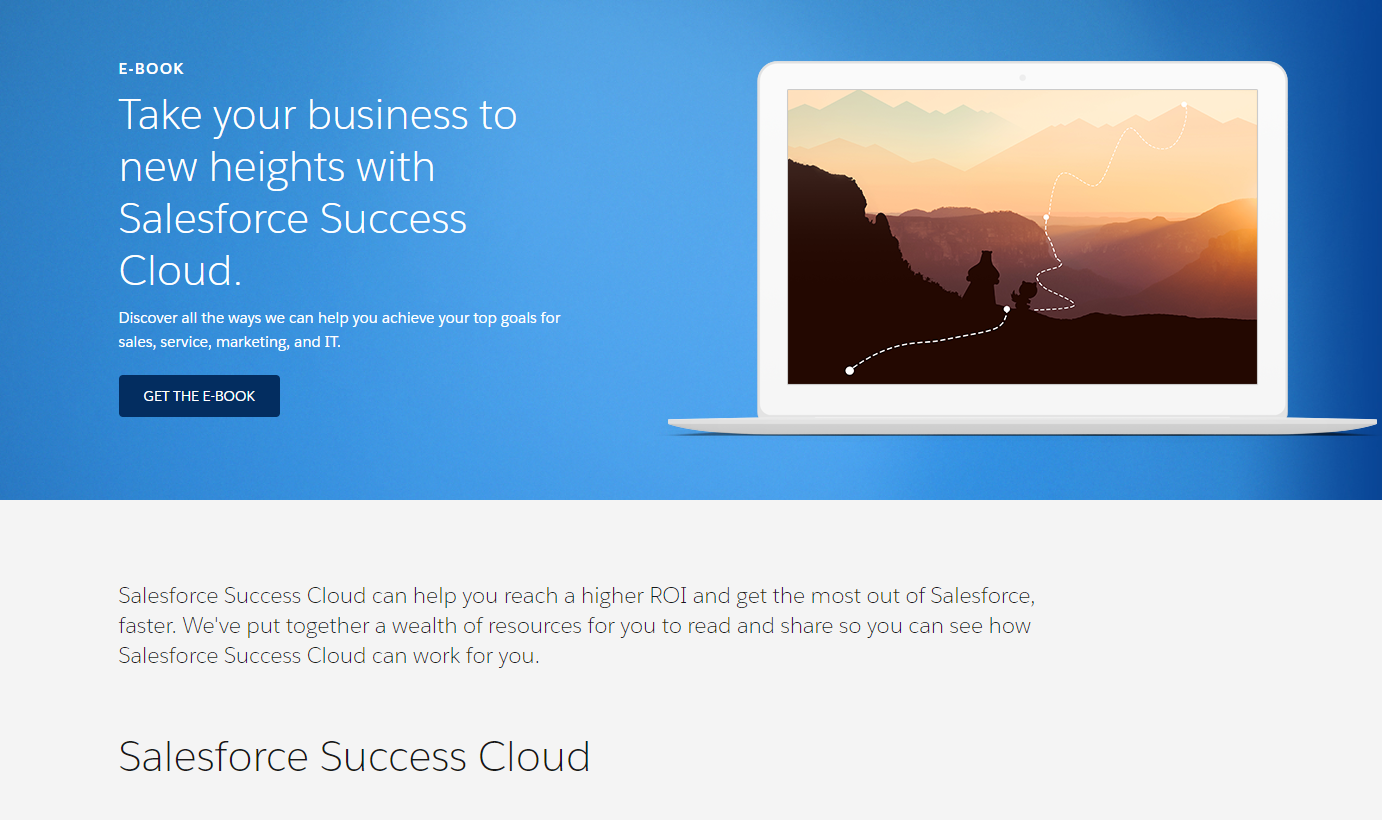
Salesforce doesn’t just sell software; they empower businesses with knowledge. Their in-depth eBooks tackle industry challenges and showcase how Salesforce solutions can address them. Self-serving, sure, but these comprehensive resources offer valuable insights and practical strategies, making Salesforce a go-to resource for potential customers.
The value of Salesforce’s eBooks lies in their ability to educate and nurture leads. By providing free, downloadable content that addresses specific business needs, Salesforce plays the role of a trusted advisor. Readers gain valuable knowledge while getting a taste of Salesforce’s expertise, making them more likely to consider the company for their CRM (customer relationship management) needs.
Lesson learned: Educate your audience with valuable content that dives deep into their pain points and showcases your solutions. Offer downloadable resources like eBooks to nurture leads and establish yourself as a trusted advisor in your industry.
8. Spotify’s Wrapped playlists

While Spotify’s Wrapped playlists themselves aren’t technically content marketing pieces, they masterfully spark a wave of user-generated content that fuels social media engagement.
Spotify Wrapped taps into our love of personalization and social sharing. Users are eager to share their Wrapped results, sparking conversations and friendly competition around music tastes. This user-generated content creates a sense of community and excitement around the Spotify brand, all fueled by a clever data-driven marketing campaign.
Lesson learned: Create shareable experiences that tap into user personalization and the power of social media. Encourage user-generated content by providing engaging formats that spark conversation and community building. This organic content creation can significantly amplify your brand message and reach a wider audience.
9. Shopify’s podcast
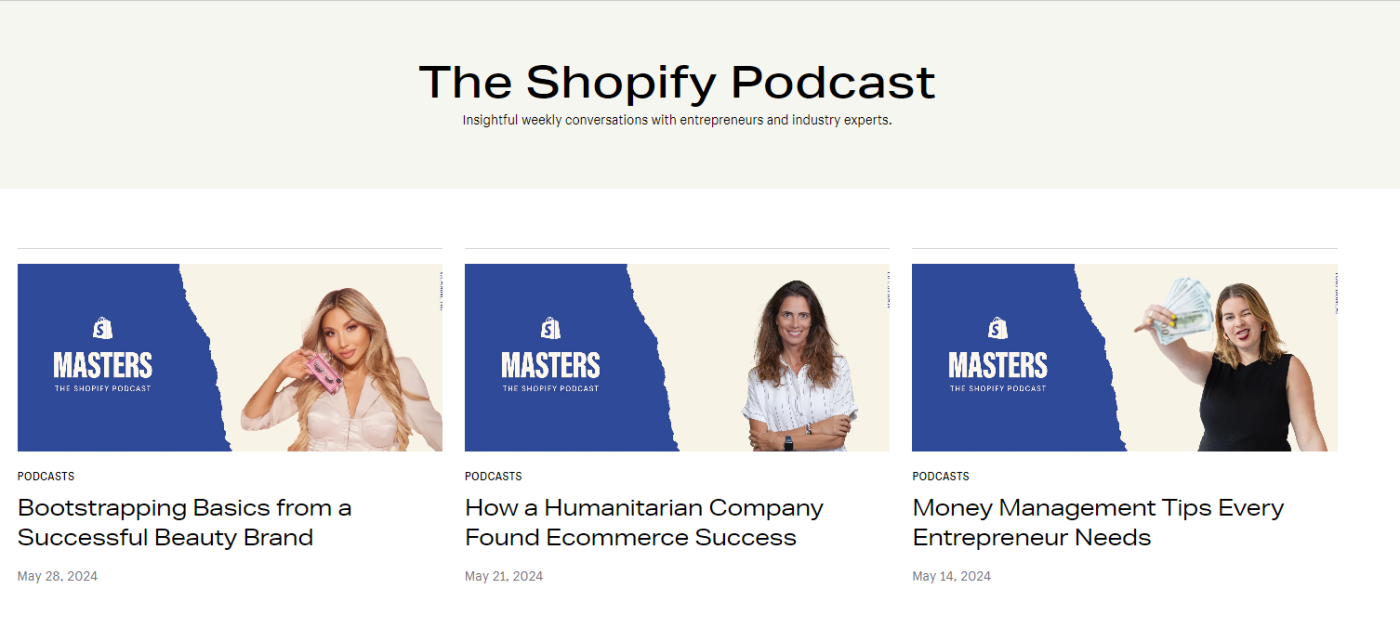
Shopify’s podcast, “Thank God It’s Monday” (TGIM), isn’t your typical marketing ploy. Instead, it offers a refreshing approach to content marketing by focusing on inspiration and community building. The podcast features interviews with successful entrepreneurs and business leaders who share their stories, struggles, and triumphs.
This approach resonates with Shopify’s target audience of aspiring and established business owners. Listeners gain valuable insights, practical advice, and a dose of motivation to keep them going on their entrepreneurial journeys. The podcast’s success highlights the power of content marketing that inspires and educates your audience, fostering a sense of community and brand loyalty.
Lesson learned: Expand your content marketing reach by exploring audio formats like podcasts. Target your content to a specific audience and leverage the power of storytelling and expert interviews. Podcasts can foster audience engagement and position your brand as a thought leader in your field.
10. GoPro’s contests for user-generated content
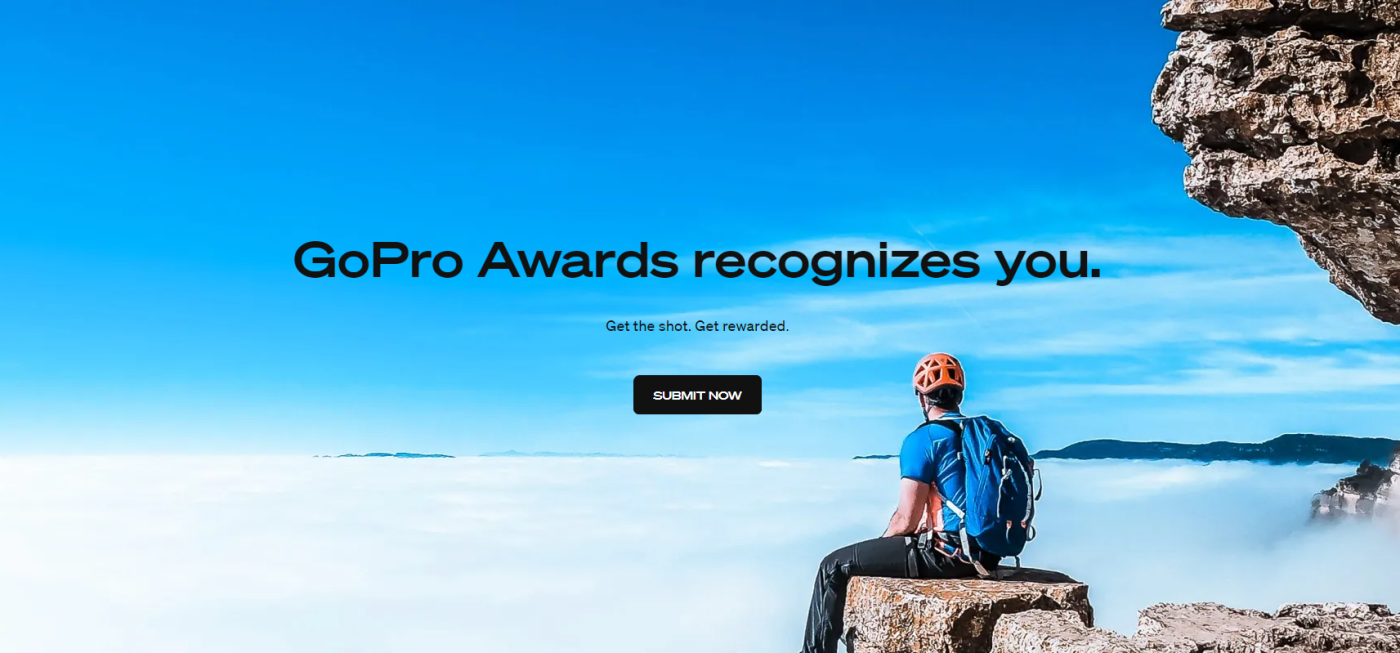
GoPro challenges users to submit videos showcasing their most thrilling experiences filmed with GoPro cameras for rewards and prizes.
The brilliance of GoPro’s approach lies in their ability to leverage the creativity and passion of their user base. These contests generate a wealth of exciting and engaging content that perfectly showcases the capabilities of GoPro cameras for some freely acquired marketing material.
By sharing user-generated content, GoPro benefits from free, authentic marketing that speaks to their target audience. It’s the equivalent of selling pickaxes outside a gold mine and photographing the gold people dig up with them.
Lesson learned: Turn your audience into brand ambassadors by encouraging user-generated content. Host contests that challenge users to create content aligned with your brand identity. This leverages the power of authenticity and community, generating exciting content that promotes your brand.
11. FlowingData’s data visualization

FlowingData, created by information designer Nathan Yau, is a prime example of how interactive data visualizations can captivate an audience. Yau crafts engaging charts and graphs that explore a wide range of topics, from movie budgets to the spread of misinformation. At its core, the website’s value is in the data surrounding the topics it discusses. But the content marketing is centered around data visualization.
The beauty of FlowingData’s approach is in its accessibility and user engagement. By making complex data interactive, Yau gives you the opportunity to discover information and data trends in a visual and easily digestible manner, uncovering hidden patterns and trends.
This fosters a sense of discovery and empowers viewers to gain a deeper understanding of the data they’re looking at. FlowingData’s success highlights the power of interactive content marketing: transforming data from static charts into engaging experiences that educate and entertain.
Lesson learned: Don’t underestimate the power of play in data visualization. Craft interactive experiences that allow users to explore information at their own pace. This approach can transform complex data into simpler visual assets.
12. Canva’s tutorials

Canva isn’t just a graphic design platform; it’s a gateway to creative expression for everyone. Their extensive library of tutorials empowers users of all skill levels to create professional-looking designs. These tutorials cover a lot of topics, from fundamental design principles to advanced techniques like photo manipulation or video editing.
By offering free, easy-to-follow instructions, Canva dismantles the barriers to entry for those who might feel intimidated by graphic design. This fosters a loyal user base who see Canva as a trusted resource for learning and growing their creative potential.
Lesson learned: By providing free, valuable resources like tutorials, you effectively train potential users and coach them in using your solution, transforming customers into brand advocates invested in your success. This approach builds trust, loyalty, and a sense of community around your brand.
13. Oatly’s Instagram
Oatly’s content goes beyond simply promoting its product; it embraces humor, self-deprecating jokes, and unexpected brand interactions.
The magic of Oatly’s Instagram lies in its authenticity and ability to connect with their audience on a personal level. Their playful tone and willingness to embrace the bizarre speaks to a younger generation that values transparency and a sense of humor. This unique approach to content marketing has turned Oatly into a cultural touchstone, proving that brands can win over audiences by being genuine—and a little bit weird.
Lesson learned: Dare to experiment and inject personality into your social media presence. Embrace humor, unexpected connections, and even weirdness to resonate with your target audience. Authenticity and a willingness to have fun can build brand loyalty and turn you into a cultural phenomenon.
14. Microsoft’s customer stories
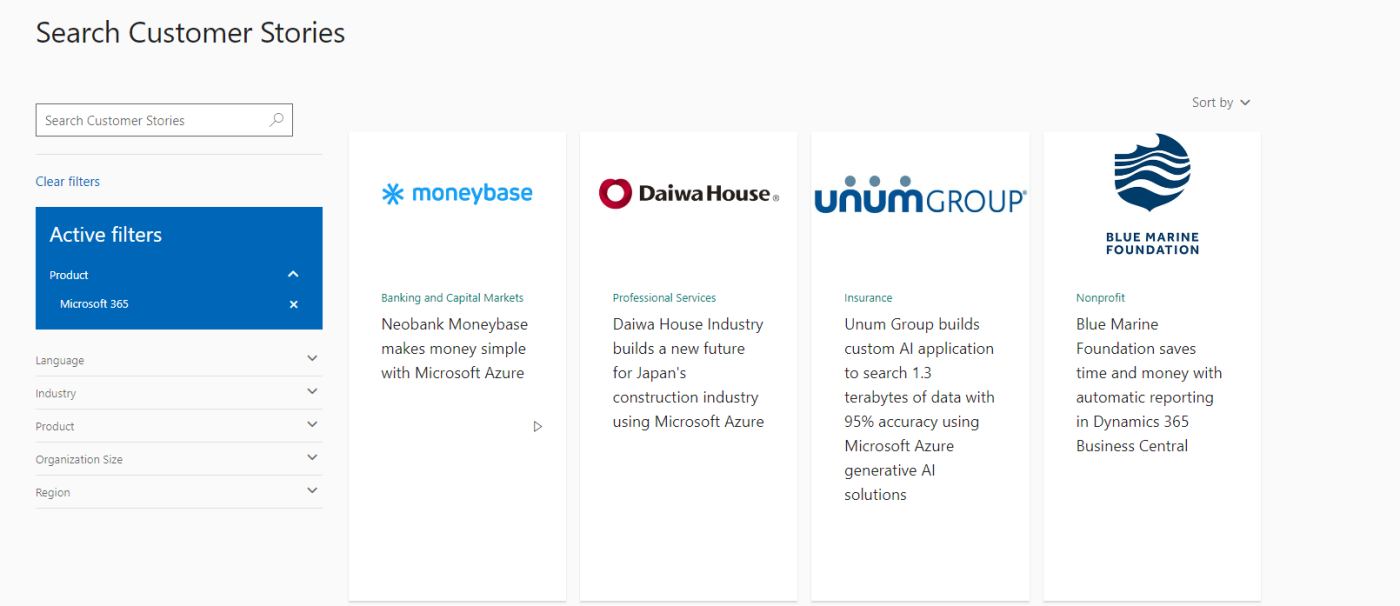
Microsoft leverages the power of storytelling with their compelling customer stories. These stories showcase real-world examples of how Microsoft products and services have helped businesses and organizations achieve their goals. From streamlining operations to fostering innovation, these customer narratives demonstrate the tangible benefits of using Microsoft solutions.
They’re designed to establish social proof and build trust. By featuring real-world success stories, Microsoft avoids generic marketing claims and allows satisfied customers to act as brand advocates, showcasing the positive impact of Microsoft products. This fosters trust and credibility, influencing potential customers who see themselves reflected in the stories.
Lesson learned: Showcase the positive impact of your product or service by featuring real customer stories. Every happy customer is a case study and a potential marketing opportunity.
Finding new ideas: How to think outside the box
Now, I know inspiration isn’t just something you switch on, and being ready to create killer content marketing doesn’t mean the creative lights are on. But brainstorming doesn’t have to be a solitary struggle. Here are some effective strategies to spark inspiration and help you develop fresh and engaging content:
-
Competitor analysis: Take a peek at what your competitors are doing. What type of content are they creating? What seems to resonate with their audience? Use competitor analysis tools to analyze their strengths and weaknesses and identify gaps you can fill with your unique approach.
-
SEO research: Identify trending keywords with keyword research tools and search queries within your niche. Understanding what your audience is actively searching for online allows you to tailor your content to their needs and improve your search engine ranking.
-
AI: Leverage the power of artificial intelligence tools. Some content marketing platforms and SEO tools offer AI-powered topic suggestion features or competitor analysis tools to help you discover untapped content opportunities.
-
Audience research: Don’t underestimate the power of your audience. Conduct surveys and polls or host Q&A sessions to understand their pain points, interests, and content preferences. Catering your content directly to their needs is a surefire way to boost engagement.
-
Staying updated on industry trends: Keep your finger on the pulse of your industry. Read industry publications, attend conferences, and follow industry influencers to stay up to date on what’s hot and what’s not. This allows you to create timely and relevant content that positions you as a thought leader.
Why content marketing matters
Done right, content marketing builds trust, establishes you as an authority, and ultimately converts potential customers into loyal users. You can measure the impact through website traffic, engagement metrics like social media shares and comments, and lead generation.
By consistently creating high-quality content and making sure it’s as human as possible, you’re nurturing relationships with your audience and keeping your brand at the forefront of their minds. Today, AI tools can be powerful allies in your content marketing arsenal: you can use AI to generate content ideas, headlines, or even social media posts to get your creative juices flowing.
But automation doesn’t stop there. Zapier allows you to connect the dots between your favorite content creation tools and marketing platforms. Automate repetitive tasks like scheduling social media posts, sending email newsletters, or analyzing website traffic.
By letting Zapier handle the heavy lifting, you can focus on what matters most: crafting compelling content that connects with your audience and fuels your content marketing success.
Related reading: